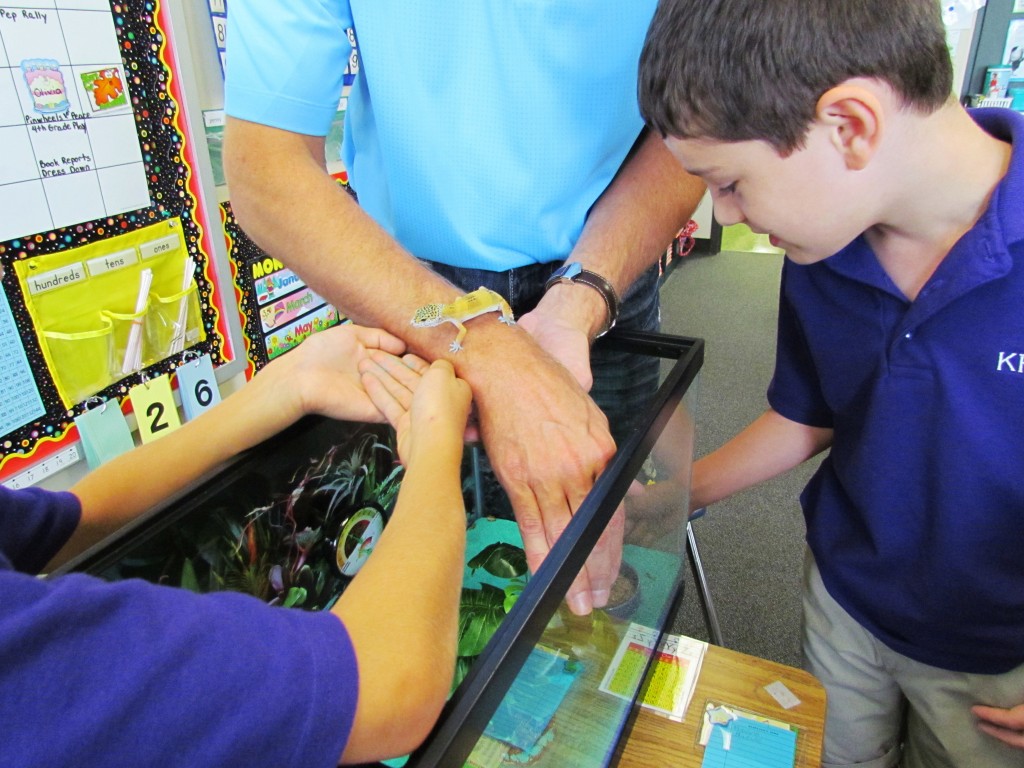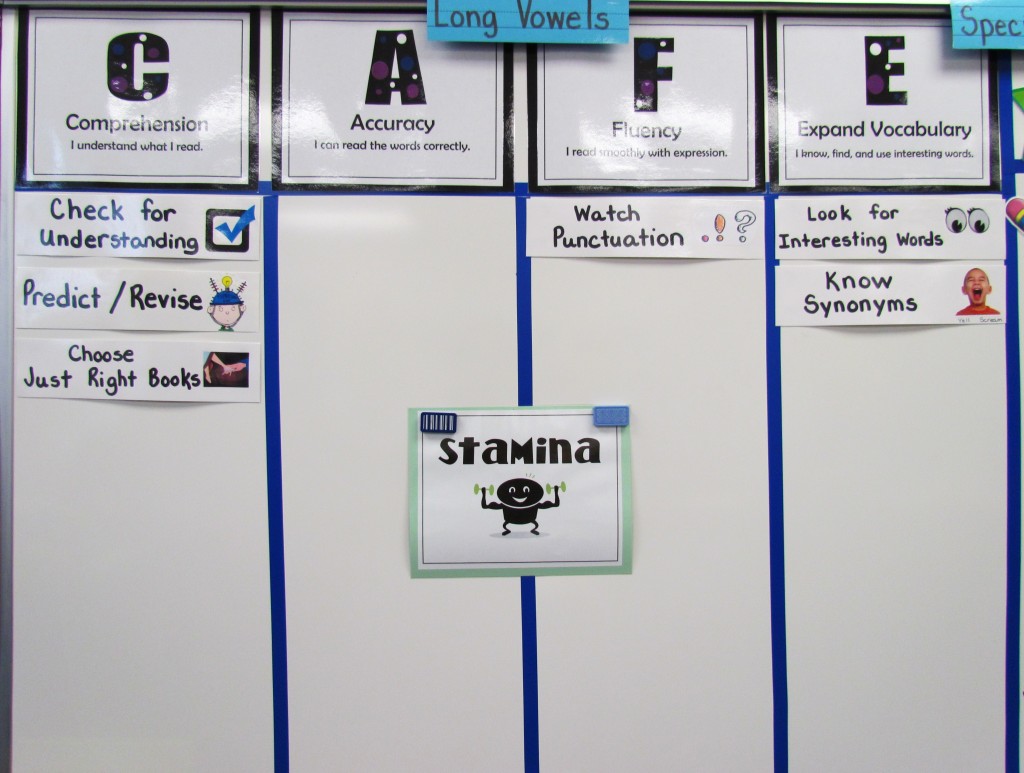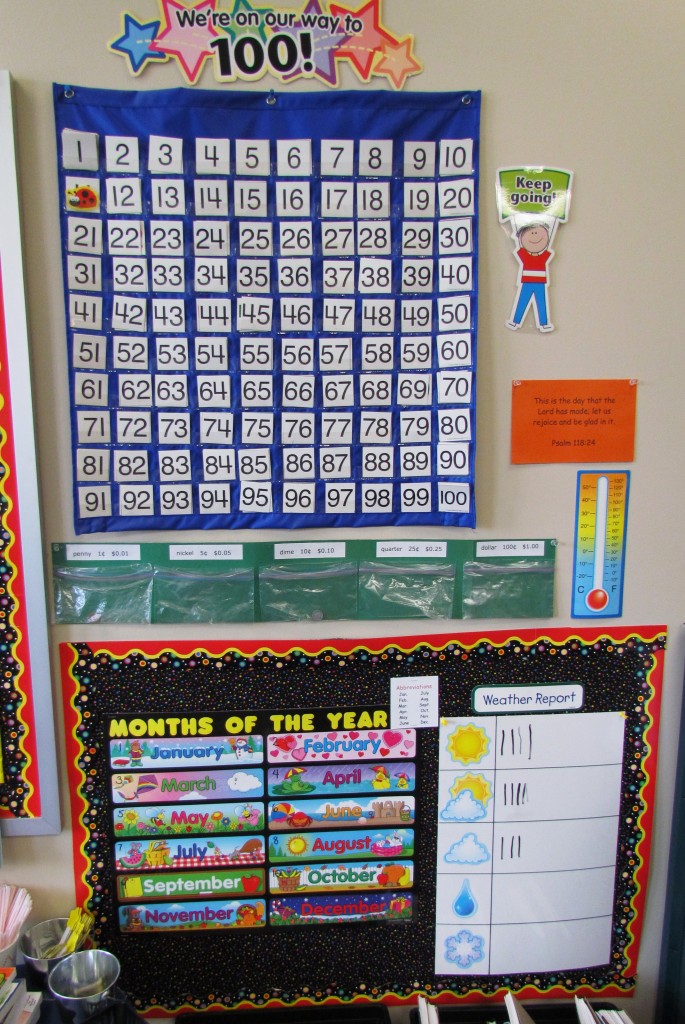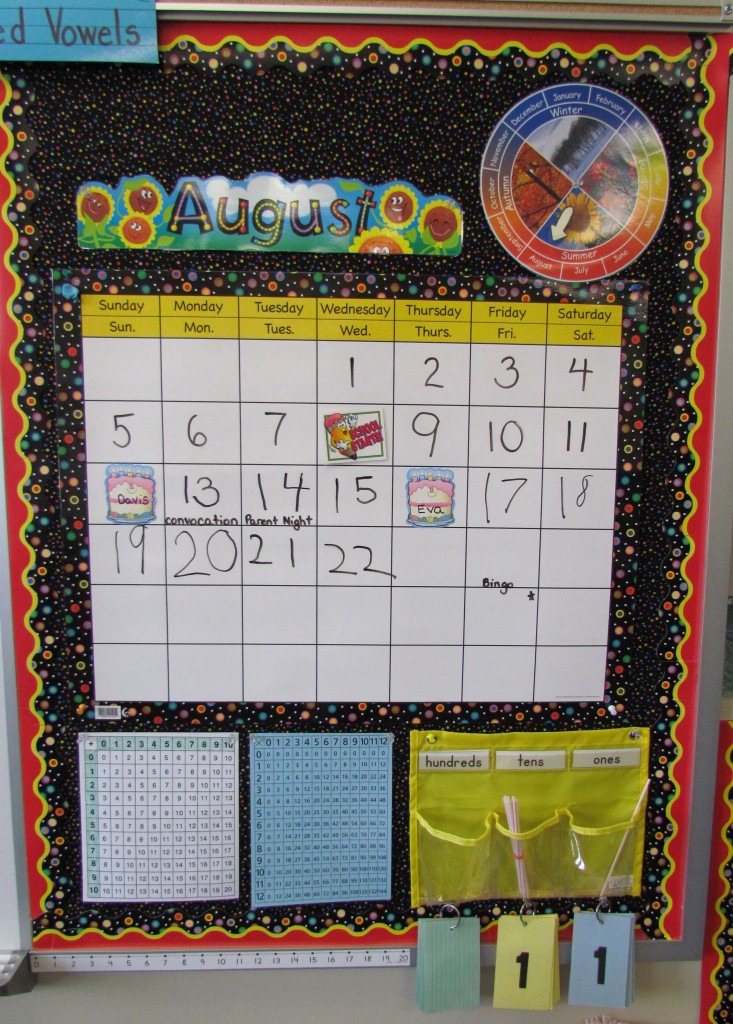Word Jail
Some words cannot be decoded using phonics skills and we refer to these words as rule breakers. They need to be memorized. I added the Word Jail this week, so that the children have a quick resource when they are writing. These are our “no excuse” words and they should be spelled correctly on our papers! I will add the sight words from this week’s spelling list after our test.
CAFE Board
My goal is to teach your children literacy skills that they will use through their lifetime. I have become a fan of The Literacy Cafe written by sisters who teach in Washington State. I have instituted a CAFE menu in our classroom. CAFE is a synonym for restaurant. When you go to a restaurant, you use a menu to make your food choices. We use our CAFE menu to choose strategies to help us become independent readers. Each letter of the Menu stands for a component of reading – Comprehension, Accuracy, Fluency, and Expand Vocabulary. I add strategies as we learn them and refer to these strategies when I read aloud, work with small groups, and confer with individual students.
Word Work
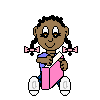 I will teach phonics skills and word patterns (chunks) to the children this year. Some children learn to read by identifying words automatically by sight and have good visual memory skills. These are often our early readers. As they grow older, these same children may run into difficulty when they run across multisyllabic words if they have not learned decoding skills. Although there are exceptions, most of the English words follow patterns. (Our language does contain foreign words that don’t always follow the “rules”.) Words that can’t be decoded are referred to as sight words or rule breakers. Our spelling words follow the patterns we are learning. Children will use these same skills when they encode or write.
I will teach phonics skills and word patterns (chunks) to the children this year. Some children learn to read by identifying words automatically by sight and have good visual memory skills. These are often our early readers. As they grow older, these same children may run into difficulty when they run across multisyllabic words if they have not learned decoding skills. Although there are exceptions, most of the English words follow patterns. (Our language does contain foreign words that don’t always follow the “rules”.) Words that can’t be decoded are referred to as sight words or rule breakers. Our spelling words follow the patterns we are learning. Children will use these same skills when they encode or write.
I want to give you the rules and patterns on which we are currently focusing or will be shortly. Many of you went to school when phonics wasn’t emphasized, so you may be learning along with your children!
Vowels
- The vowels are a, e, i, o, and u. They all have a short sound and a long sound. Y is a vowel if it makes an “e” (happy) or an “i ” (my) sound.
- All words contain a vowel. Some words are just a vowel – a and I.
- Every syllable contains a vowel. A vowel team (ie, ee, ea) counts as one vowel and a silent e does not count as a vowel.
CVC (Consonant Vowel Consonant) Words
- CVC words have a short vowel. Tap, sip, and cup are examples.
- Two CVC syllables can be combined to form a new word, such as basket, happen, and tablet.
- Doubling Rule: Double the last consonant when you add “ing” or “ed” to a CVC word- tapping or tapped.
CVCe (Silent e)
- When “e” is at the end of a CVC word, the vowel changes from short to long.
- A syllable at the end of a word with more than one syllable, may follow this pattern too. Examples are behave, hurricane, and rescue.
- Dropping Rule: When adding “ing” or “ed” to the end of a silent e word, drop the “e” before you add “ing” or “ed”. (baking or baked)
- Words don’t end with a “v”. If you hear a “v” at the end of a word, add an “e”. Examples of this rule are olive, carve, stove, give, have, love, and Maeve.
Morning Meeting
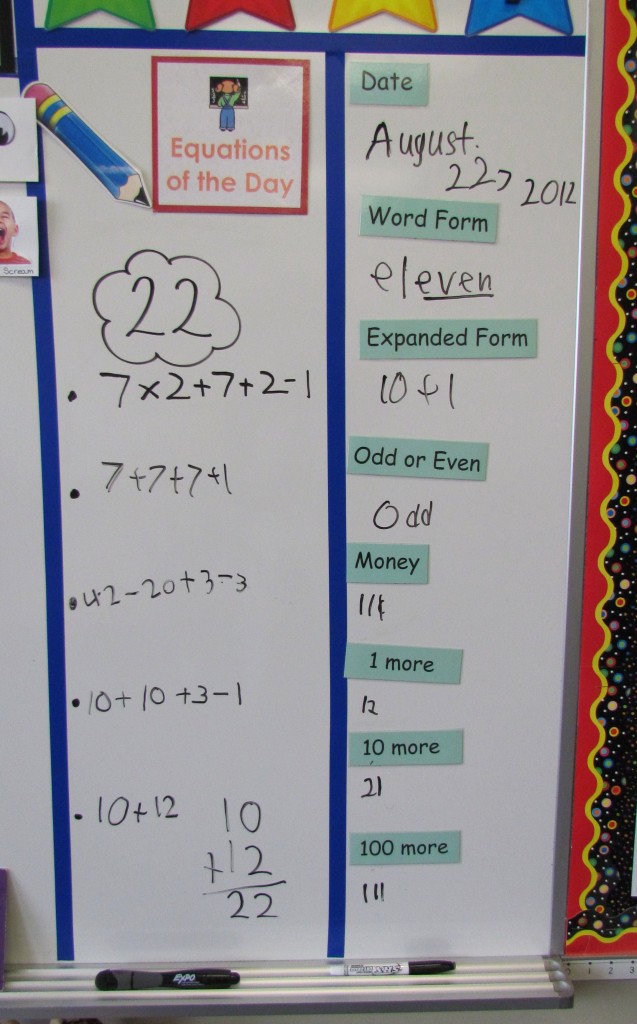
Every day we use the calendar and weather chart to review math concepts.
I write upcoming events on the calendar and the children refer to it often. They write the numbers on the calendar each day. This month we are using cardinal (counting) numbers, but we will use ordinal numbers in September. n future months, watch for number words and Roman numerals. I ask questions about the calendar. For example, what are the dates of the Fridays in August? If today is the 3rd, what date will it be in two weeks? If August ends on a Friday, on which day of the week will September begin?
This month our weather chart is a tally chart. In upcoming months, watch for a pictograph, bar graph, and circle graph.
We add a penny each day and then make trades for nickels, dimes, and quarters. When we reach the 100th day, we will have a dollar.
We are also learning to write the word and expanded forms of each number and to determine if a number is odd or even. We will begin rounding to the nearest ten in September.
Each day four children write an equation that equals the date. Our mental math skills are growing stronger, and we are recognizing number patterns. We work on skip counting, multiplication and division too.
It is amazing how many skills we cover in just a few minutes!
